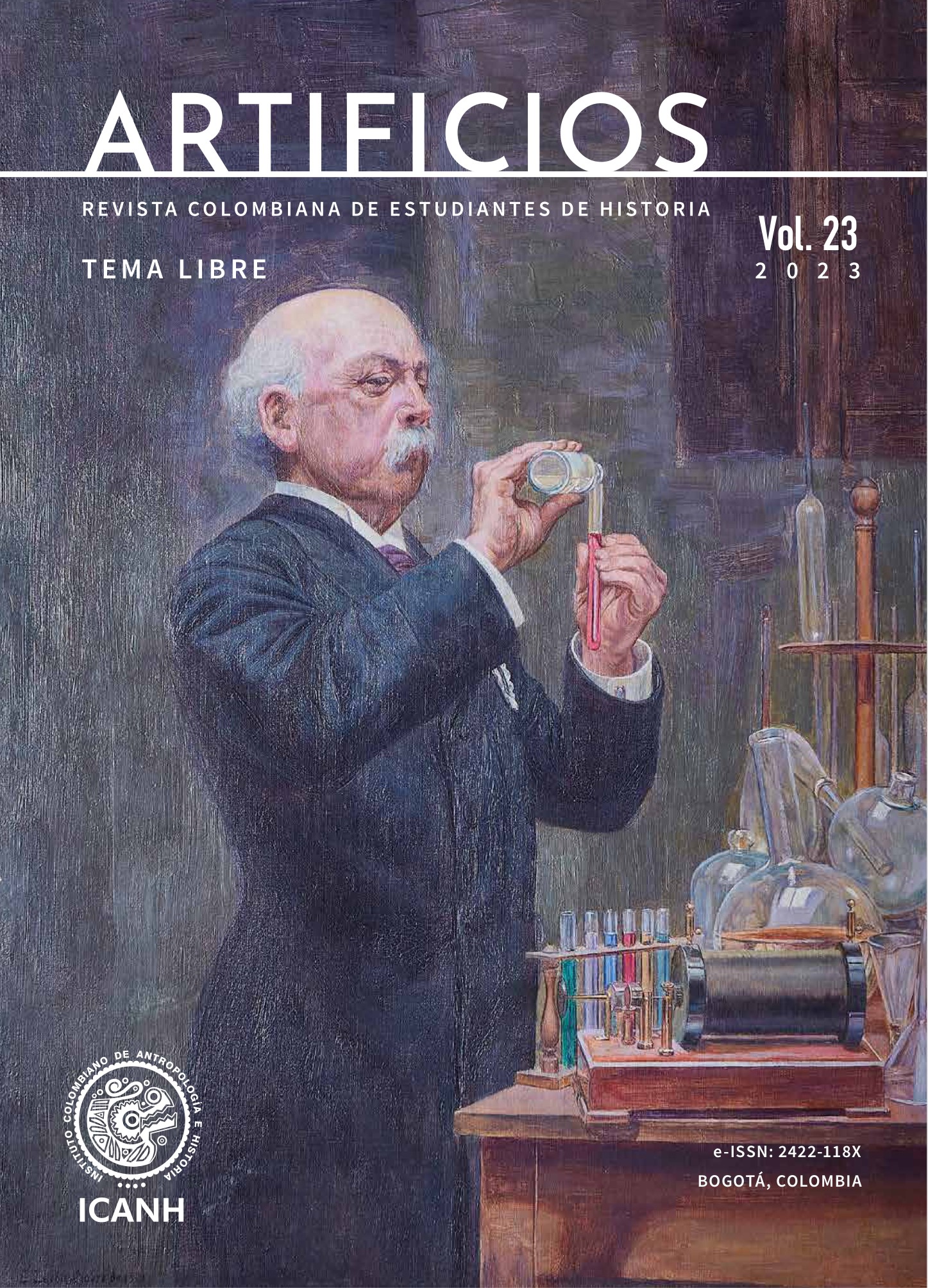Carl Hagenbeck´s human exhibitions and whiteness (1880-1881) in Europe
DOI:
https://doi.org/10.22380/2422118X.2501Keywords:
blancura, colonialismo, cuerpos, exhibiciones humanasAbstract
In the nineteenth century, paying to see living foreign people perform was a popular phenomenon in Europe. Paradoxically, few traces of these exhibitions remain today. However, they created a lasting legacy by shaping public attitudes toward ethnic differences. I will analyze the diary of Abraham Ulrikab who left the only source produced by one of the persons exhibited. By doing this, I laid bare how whiteness was built on a set of cultural practices, that have been unnamed but that nonetheless are part of a process of domination. Bodies conveyed meanings that were devised from an invisible position, a zero-point, a marker, against which difference was measured. Hence, the bodies were part of long duration phenomenon that started in London during the XVII century and was expanded outwards. The body was targeted not only for being the most intimate space but also the signified through which domination was completed.
Downloads
References
Bibliografía
Andreassen, Rikke. Human Exhibitions: Race, Gender, and Sexuality in Ethnic Displays. New York: Routledge, 2015.
Blanchard, Pascal. Human Zoos. The Invention of the Savage. Paris: Arles, 2011.
Böhme, Hartmut. “Consumer Culture and Fetichism.” In Fetishism and Culture: A Different Theory of Modernity, edited by Hartmut Böhme, 270-279. Berlin: De Gruyter, 2014.
Curto, Roxanna. “Bourdieu and Fanon on Algeria.” In Bourdieu and Postcolonial Studies, edited by Raphael Dalleo, 102-118. Liverpool: Liverpool University Press, 2016.
Demski, Dagnoslaw. “Introduction.” In Staged Otherness: Ethnic Shows in Central and Eastern Europe, 1850-1939, edited by Dagnoslaw Demski, 1-44. Budapest: Central University Press, 2001.
Dreesbach, Anne. “Wissenschaftler brauchen Material.” In Gezähmte Wilde: Die Zurschaustellung exotischer Menschen in Deutschland, edited by Anne Dreesbach, 280-306. Frankfurt: Campus Verlag, 2005.
Friedman, John. “The Plinian Races”. In The Monstrous Races in Medieval Art and Thought, edited by John Friedman, 5-25. New York: Syracuse University Press, 2000.
Gabay, Clive. “Introduction.” In Imagining Africa: Whiteness and the Western Gaze, edited by Clive Gabay, 1-48. Cambridge: Cambridge University Press, 2022.
Gordon, Natasha. Representation and Black Womanhood. New York: Palgrave McMillan, 2011.
Hermans, Theo. Translation and History. New York: Routledge, 2022.
Hoegaerts, Josephine. “Introduction.” In Finishes, Whiteness and Coloniality, edited by Josephine Hoegaerts, 1-16. Helsinki: Helsinki University Press, 2022.
Kamali, Masoud. “Introduction.” In Neoliberal Securitisation and Symbolic Violence: Silencing Political, Academic, and Societal Resistance, edited by Masoud Kamali, 1-23. Cham: Palgrave Mcmillan, 2021.
Krizova, Marketa. “Alone in the Country of the Catholics: Labrador Inuit in Prague (1880).” Ethnologia Actualis 20, no. 2 (2020): 20-45. https://doi.org/10.2478/eas-2021-0010
Lingelbach, Jochen. “Polish Refugees in British Colonial Africa During and After the Second World War.” In On the Edges of Whiteness. Polish Refugees in British Colonial Africa During and After the Second World War, edited by Jochen Lingelbach, 171-256. New York: Berghahn Books, 2020.
Lutz, Harmut. The Diary of Abraham Ulrikab. Text and Context. Ottawa: University of Ottawa Press, 2005.
Meer, Nasar. “The Wreckage of White Supremacy.” In Whiteness and Nationalism, edited by Nasar Meer, 1-9. London: Routledge, 2021.
Morgan, Jennifer. “Male Travellers, Female Bodies, and the Gendering of Racial Ideology, 1500-1700.” In Bodies in Contact: Rethinking Colonial Encounters in World Histo ry, edited by Tony Ballantyne, 54-66. Durham: Duke University Press, 2005.
Nayak, Anoop. “Critical Whiteness Studies”. Sociology Compass 1, no. 2 (2007): 737-755. https://doi.org/10.1111/j.1751-9020.2007.00045.x
Putova, Barbora “Freak Shows: The Otherness of the Human Body as a Form of Public Presentation.” Anthropologie 56, No. 2 (2018): 91-102. https://doi.org/10.26720/anthro. 17.07.20.1
Qureshi, Sadiah. “Conclusion.” In People on Parade: Exhibitions, Empire, and Anthropology in Nineteenth-Century Britain, edited by Sadiah Qureshi, 271-284. Chicago: University Chicago Press, 2011.
Spivak, Gayatri. “Can the Subaltern Speak?”. Colonial Discourse and Post-Colonial Theory, edited by Patrick Williams and Laura Chrisman, 66-111. New York: Columbia University Press, 1994.
Stähelin, Balthasar. Völkerschauen im Zoologischen Garten Basel, 1879-1935. Basel: Basler Afrika Bibliographien, 1993.
Taylor, Gary. “Introduction.” In Buying Whiteness: Race, Culture, and Identity from Columbus to Hip Hop, edited by Gary Taylor, 1-22. New York: Palgrave Mcmillan, 2005.
Thapar-Björkert, Suruchi. “Exploring Symbolic Violence in Everyday: Misrecognition, Condescension, Consent, and Complicity.” Feminist Review, Vol. 112, no. 1 (2016): 144-162. https://doi.org/10.1057/fr.2015.53
Thode-Arora, Hilke. “The Hagenbeck Ethnic Shows.” In Staged Otherness: Ethnic Shows in Central and Eastern Europe, 1850-1939, edited by Dagnostaw Demski, 45-76. Budapest: Central University Press, 2001.
Young, Robert. Colonial Desire: Hybridity in Theory, Culture, and Race. Hoboken: Routledge, 1994.
Downloads
Published
How to Cite
Issue
Section
License
Copyright (c) 2023 javier Cantor

This work is licensed under a Creative Commons Attribution-NonCommercial-NoDerivatives 4.0 International License.




